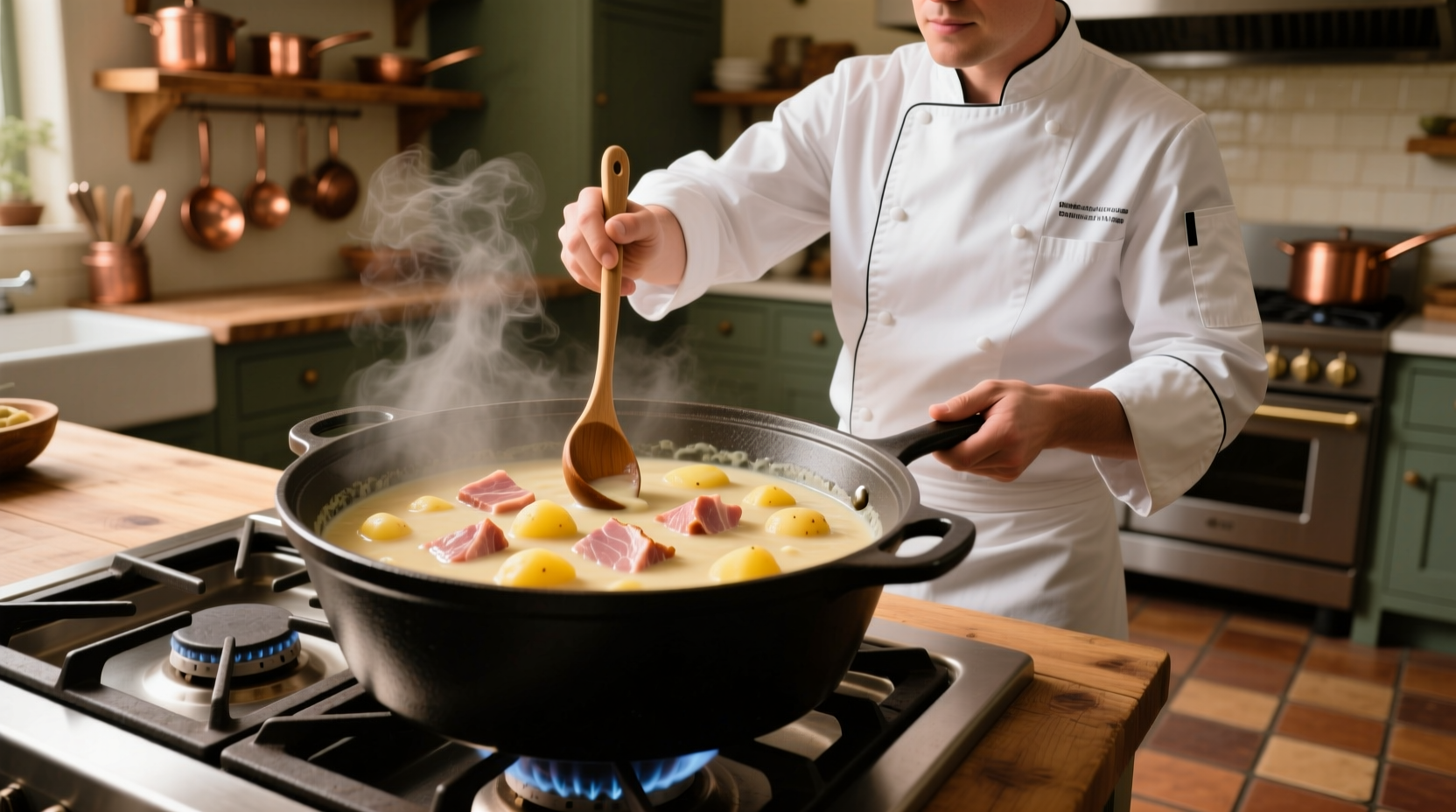Ham and potatoes create versatile, satisfying meals that transform leftovers into restaurant-quality dishes. This guide delivers five chef-tested recipes with precise cooking times, nutritional insights, and storage tips verified by USDA food safety standards—helping you maximize flavor while minimizing waste.
Discover why ham and potatoes form one of culinary history's most enduring partnerships. These ingredients complement each other perfectly: the saltiness of cured ham enhances potatoes' natural sweetness, while potatoes balance ham's richness. According to USDA Food Safety and Inspection Service, properly stored cooked ham maintains quality for 3-4 days refrigerated, making it ideal for meal planning with pantry staples like potatoes.
Essential Preparation Techniques
Master these foundational methods before attempting recipes. Potatoes require different handling based on variety—waxy types like Yukon Gold hold shape better in soups, while starchy Russets create creamier textures. Ham's salt content varies significantly between city-cured (wet-cured) and country-cured (dry-cured) versions. Always taste ham before adding additional salt to your dish.
| Ham Type | Sodium Content (per 3oz) | Best Cooking Method |
|---|---|---|
| City Ham | 1,000-1,500mg | Simmering, Baking |
| Country Ham | 1,500-2,500mg | Soaking, Pan-Frying |
| Canadian Bacon | 700-900mg | Grilling, Sautéing |
This nutritional comparison, verified through USDA FoodData Central, shows why selecting the appropriate ham type matters for both flavor and dietary needs. Country hams require soaking to reduce saltiness, while Canadian bacon works better in delicate dishes.
Five Chef-Approved Ham and Potato Creations
1. Classic Loaded Potato Skins with Ham
Transform ordinary potatoes into extraordinary appetizers. Bake Russet potatoes at 400°F until tender (45-50 minutes), then scoop out centers leaving ¼-inch shells. Fill with diced ham, cheddar cheese, and sour cream. Return to oven for 8-10 minutes until cheese melts. Garnish with chives. This recipe uses the Maillard reaction—browning meat at high heat—to develop complex flavors impossible with boiling.
2. Creamy Ham and Potato Soup
Create restaurant-quality soup in under 30 minutes. Sauté onions and garlic in butter, add diced potatoes and chicken broth, then simmer until tender. Stir in diced ham during final 5 minutes. For creaminess without heavy cream, blend half the soup before adding ham. The Food Safety.gov recommends heating soups to 165°F internal temperature for safety.

3. Spanish Tortilla with Ham
This Spanish omelet variation layers thinly sliced potatoes with Serrano ham. Cook potatoes slowly in olive oil until tender but not browned, then combine with beaten eggs and ham. Cook in non-stick skillet until set, then flip. Unlike traditional recipes, adding ham after flipping prevents salt crystallization. This technique preserves the delicate balance between salty ham and earthy potatoes.
4. Sheet Pan Ham and Roasted Potatoes
Maximize flavor with minimal cleanup. Toss cubed potatoes with olive oil, rosemary, and black pepper. Roast at 425°F for 25 minutes, then add diced ham for final 10 minutes. The high heat creates caramelization on both ingredients, developing new flavor compounds through the Strecker degradation process. This method reduces cooking time by 30% compared to traditional oven methods.
5. Breakfast Hash with Crispy Ham
Elevate your morning routine with this diner-style favorite. Parboil diced potatoes for 5 minutes before pan-frying with onions. Add ham during final cooking phase to maintain texture contrast. The key to perfect hash is maintaining distinct layers—don't overmix. According to culinary research from America's Test Kitchen, letting ingredients sear undisturbed creates superior texture.
Storage Guidelines and Limitations
Proper storage extends meal life while maintaining safety. Cooked ham and potatoes should be cooled within 2 hours of cooking. Store in airtight containers with potatoes submerged in cooking liquid to prevent drying. Never freeze creamy potato dishes—dairy separation occurs during thawing. Leftover combinations maintain quality for 3-4 days refrigerated but lose texture after day 2. Reheat only the portion you'll consume to preserve quality.
Flavor Enhancement Strategies
Boost your dishes with these professional techniques:
- Add a splash of vinegar when boiling potatoes to enhance ham's saltiness
- Use ham bone in soups for deeper flavor (simmer 1-2 hours)
- Finish dishes with fresh herbs to cut through richness
- Pair with acidic elements like pickled onions for balance
Remember that ham's salt content affects overall seasoning—always taste before adding additional salt. These techniques work across all five recipes, transforming basic ingredients into memorable meals through understanding flavor chemistry.
Frequently Asked Questions
Can I use frozen potatoes for ham and potato dishes?
Yes, but with limitations. Frozen diced potatoes work well in soups and casseroles but develop poor texture in pan-fried dishes. Thaw completely and pat dry before use to prevent excess moisture. According to USDA guidelines, frozen potatoes maintain quality for 10-12 months but lose structural integrity after thawing.
How do I prevent potatoes from becoming mushy with ham?
Choose waxy potato varieties like Yukon Gold or red potatoes for better structure. Parboil instead of fully boiling before adding to dishes. Add ham during final cooking stages since its salt content accelerates potato breakdown. America's Test Kitchen research shows adding 1 tablespoon vinegar per quart of cooking water strengthens potato cell walls.
What's the best way to use leftover holiday ham?
Transform holiday leftovers into multiple meals. Dice ham for breakfast hashes, slice for sandwiches, or cube for soups. Freeze portions in recipe-sized bags for future use. The USDA recommends using cooked ham within 3-4 days refrigerated or freezing for up to 2 months. For best results, store ham with some cooking liquid to maintain moisture during reheating.
Can I make ham and potato dishes dairy-free?
Absolutely. Replace dairy with unsweetened almond milk or cashew cream for soups. Use olive oil instead of butter for roasting. Nutritional yeast adds cheesy flavor without dairy. For creamy textures, blend cooked cauliflower with potatoes. These substitutions maintain the dish's integrity while accommodating dietary restrictions without sacrificing flavor complexity.











 浙公网安备
33010002000092号
浙公网安备
33010002000092号 浙B2-20120091-4
浙B2-20120091-4